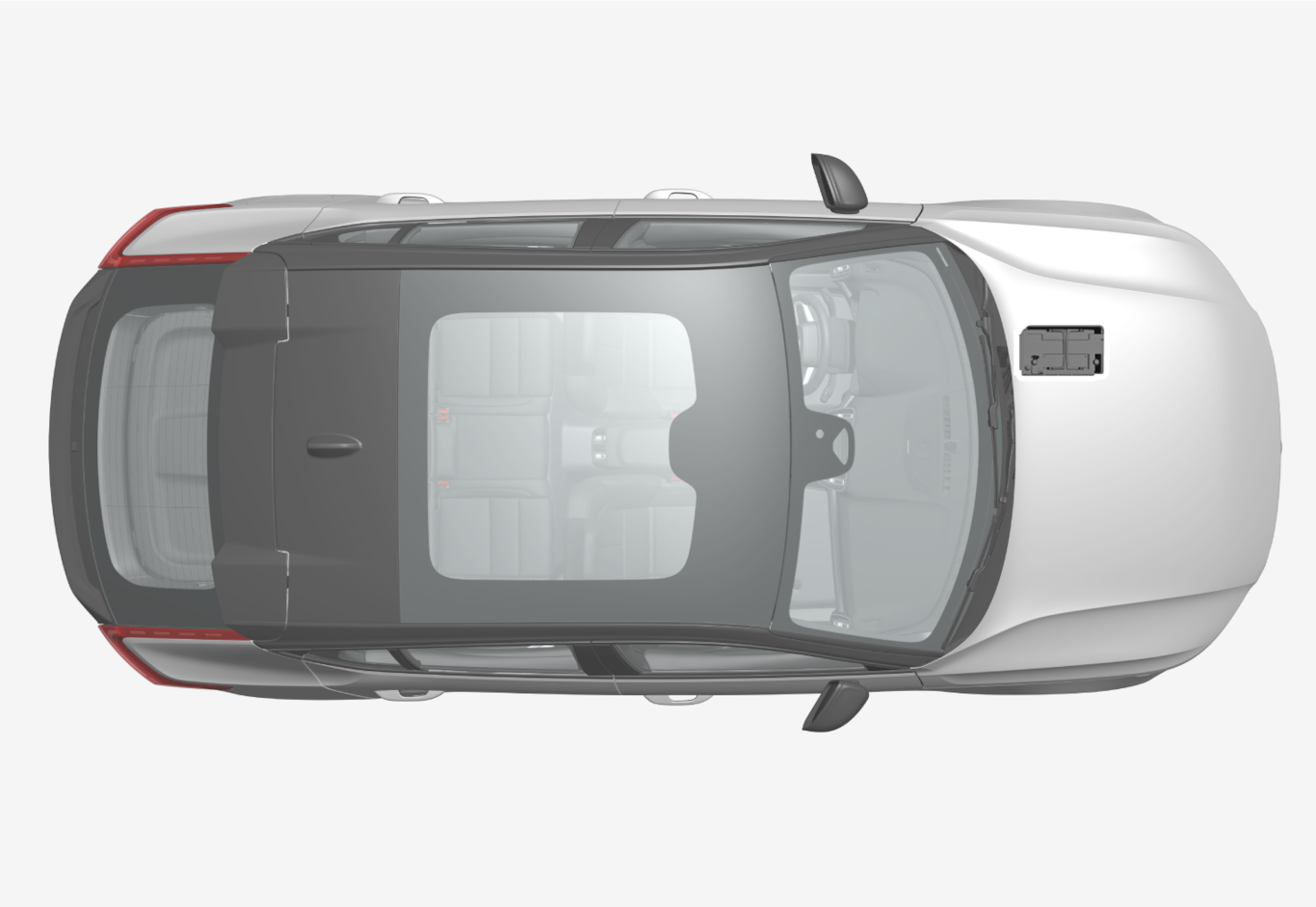The battery is dimensioned to power the electrical system and functions that are specific to the car model. Under normal conditions, it is kept charged by the larger high voltage battery.
Handling the battery
- Never disconnect the battery when the car is running.
- Check that the cables to the battery are correctly connected and properly tightened.
- If the battery is held in place by a tensioning strap – make sure that it is always firmly tightened.
Important
If the battery is replaced, make sure you replace it with a battery with the same size, cold starting capacity and type as the original battery (see the decal on the battery). Volvo recommends that you use an authorised Volvo workshop for replacing the battery.
Warning
If the 12V battery is disconnected, the automatic opening and closing function must be reset to work properly. A reset must take place for pinch protection to work.
Warning
- The battery can generate oxyhydrogen gas, which is highly explosive. A spark can be formed if a jump lead is connected incorrectly, and this can be enough for the battery to explode.
- The battery contains sulphuric acid, which can cause serious burns.
- If sulphuric acid comes into contact with eyes, skin or clothing, flush with large quantities of water. If acid splashes into the eyes - seek medical attention immediately.
- Never smoke near the battery.
Service life and capacity of the 12 V battery
The service life of the battery is influenced by several factors, including number of discharges and climate conditions. If the car is not charged for a long period of time, the battery's state of charge is reduced due to self-discharge. If the battery is discharged a large number of times, it will negatively affect the service life. A 12 V battery that is kept fully charged has a maximum service life.
Location
